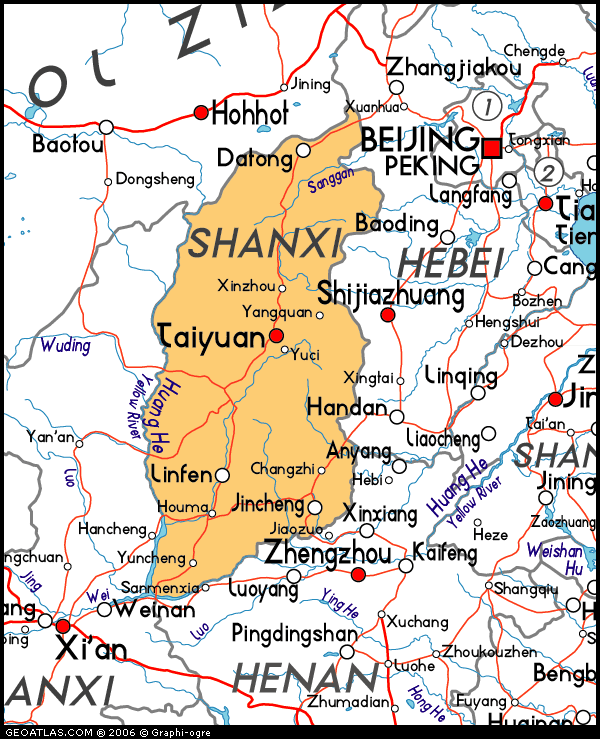|
PEOPLES - PORTRAIT |
|
|
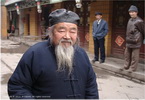 |
Peoples Portraits |
|
GPS: |
na |
|
N/A |
|
|
| |
|
|
|
|
|
|
|
TOMBS AND MAUSOLEUM of SHAANXI
province |
|
|
 |
Emperor
Qinshihuang's Mausoleum
(Terracota Army)
秦始皇帝陵博物院 |
|
GPS: |
34.38411,
109.27849 |
|
The Terracotta Army in Xi'an, is
a super large collection of
life-size terra cotta sculptures
in battle formations,
reproducing the mega imperial
guard troops of Emperor Qin Shi
Huang (259 - 210BC), the first
emperor of the first unified
dynasty of Imperial China. |
 |
|
xxxxxxxxxxxxxxxxxxxxxxx |
|
|
|
|
 |
Emperor
Qinshihuang's Mausoleum
(Tombe of Qin Shihuangdi)
秦始皇帝陵博 |
|
GPS: |
34.37876,
109.25897 |
|
Emperor Qin Shihuang began to
build the mausoleum for himself
since he came to throne at the
age of 13.. The work continued
even after the emperor’s death,
taking in total 38 years.
Emperor Qin shihuang’s Mausoleum
is very large, covering the
total area of 56.25sqkm.it is
rectangular in shape and
enclosed by two walls-the inner
city wall and the outer city
wall. |
 |
|
|
|
|
|
 |
Prince
Tang Yide Tomb
唐懿德太子墓 |
|
GPS: |
34.55588,
108.23146 |
|
Tomb of Prince Yide in Qianxian
County is a subordinate tomb of
the Qianling Mausoleum. It is
also one of the most visited
imperial tombs of the Tang
Dynasty (618-907). Prince Yide,
named Li Chongrun is the first
son of the Emperor Zhongzong (Li
Xian) and the grandson of
Empress Wu Zetian. He died in
701 when he was 19 years old. |
 |
|
|
|
|
|
 |
Tang
Yongtai Princess Tombs
唐永泰公主墓 |
|
GPS: |
34.55935,
108.23895 |
|
The Mausoleum of Princess Yong
Tai is located in Xianyang,
Shaanxi. It is in the north of
Qianling Mausoleum and it is one
of the seventeen subordinate
mausoleums of Qianling
Mausoleum. The princess is the
seventh daughter of the Emperor
Zhongzong (Li Xian), the son of
Empress Wu Zetian in the Tang
Dynasty (618-907). Princess
Yongtai died when she is 17
years old in the year 701. |
 |
|
|
|
|
|
 |
Qianling Mausoleum
乾陵博物馆 |
|
GPS: |
34.57706,
108.22005 |
|
The mausoleum is a co-burial
place of Emperor
Gaozong(governed China from
649-683) and his queen Wu
Zetian, who governed China for
15 years after death of Empress
Gaozong Empress. |
 |
|
|
|
|
|
|
|
|
 |
Zhao Mausoleum
唐昭陵 |
|
GPS: |
34.63221, 108.48831 |
|
The Zhaoling Tomb is a co-burial
tomb for Taizong by the name of
Li Shimin, the second emperor of
the Tang Dynasty and his queen
Zhangsun. |
 |
|
|
|
|
|
|
|
|
|
|
SHAANXI province |
|
|
 |
Beitun
Pagoda |
|
GPS: |
na |
|
N/A |
|
|
|
|
|
|
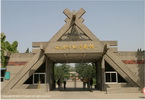 |
Banpo
半坡遗址 |
|
GPS: |
34.27323, 109.05117 |
|
Banpo Museum was discovered in
spring of 1953 and the
excavation work lasted from 1954
to 1957. Finishing the
excavation the museum was built
on the discovering site in 1957.
With three years, 45 huts, over
200 caves, 6 pottery-kiln sites,
250 tombs, 10 thousand living
and production tools, and seeds
of crops and vegetables were
found.. |
 |
|
|
|
|
|
|
|
 |
Famen Temple
法门寺 |
|
GPS: |
34.43989,
107.90454 |
|
Famen Temple is a famous temple
for keeping the sariras of
Sakyamuni Buddha. It has always
been known as the initial
monastery of all Buddhist
monasteries in the Guanzhong
Area. The Famen Temple,
initially built under the reign
of Emperor Huan of the Eastern
Han Dynasty, has a history of
over 1, 700 years. |
 |
|
|
|
|
|
 |
Huashan
华山 |
|
GPS: |
34.47786,
110.08478 |
|
Mount Hua is a huge body of
granite,its history can backdate
to 120 million years ago.It
boasts five imposing peaks with
precipices and overhanging
rocks:The east one(the Sunrise
Peak), The north one(the Clouds
Terrace Peak),The west one(the
LotusFlower Peak),and the south
one(the Wild Goose- resting
Peak) with also the steepest of
Mount Hua and the central
one(the Jade Maiden Peak). |
 |
|
|
|
|
|
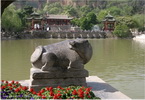 |
Huaqing Hot Spring
华清池 |
|
GPS: |
34.3632, 109.21312 |
|
The park is rebuilt on the royal
palace in Tang Dynasty ( 618
-907 ), which mainly comprises
the royal gardens and the royal
hot springs. The royal hot
springs are an excavated site,
kept original. |
 |
|
|
|
|
|
 |
Lishan
骊山 |
|
GPS: |
34.35773, 109.2141 |
|
Mount Li is a mountain located
in the northeast of Xi'an in
Shaanxi Province, China. The
mountain is part of the Qinling
mountain range and rises to a
height of 1302 metres. |
|
|
|
|
|
|
|
 |
Xianyang museum
咸阳市博物馆 |
|
GPS: |
34.33423,
108.72485 |
|
Xianyang Museum mainly has
collections of the Qin (221 BC
to 206 BC) and Han Dynasty (206
BC to 9 AD) eras. Xianyang was
the capital city of the Qin
Empire. The Qin Dynasty
controlled the first large
empire in the land, and the
boundaries established during
the Qin Empire were maintained
and enlarged upon by the Western
Han Empire. |
 |
|
|
|
|
|
 |
Others |
|
GPS: |
na |
|
N/A |
|
|
|
|
|
|
|
XI'AN city |
|
|
 |
Da
Xingshan temple
大兴善寺 |
|
GPS: |
34.22583,
108.94344 |
|
The temple had reached
unprecedented heyday in the Tang
dynasty (618–907), when
Śubhakarasiṃha, Vajrabodhi and
Amoghavajra taught Chinese
Esoteric Buddhism in the temple,
known as the "Three Prominent
Buddhist Monks in the Kaiyuan
Period". |
 |
|
|
|
|
|
 |
Great Mosque
清真大寺 |
|
GPS: |
34.26175, 108.9419 |
|
The Great Mosque in Xi'an is one
of the oldest, largest and
best-preserved Islamic mosques
in China. According to
historical records engraved on a
stone tablet inside, the Great
Mosque was built in 742 during
the Tang Dynasty (618-907). |
 |
|
|
|
|
|
 |
Big Wild Goose Pagoda
大雁塔 |
|
GPS: |
34.21815,
108.96415 |
|
The initial pagoda had an
earthen body with bricks applied
on the outsides. From 701-704
during the Empress Wu Zetian’s
reign she had the pagoda rebuilt
into a tower-like seven storied
brick pagoda, which has been
kept as it was until now.
Standing 64 meters high the
pagoda is in a square conical
shape with its bottom measuring
25 meters on all four sides and
the length of platform 45 meters
for each side. |
 |
|
|
|
|
|
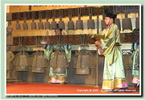 |
Traditionnal Music Concert on
Xian Bell Tower |
|
GPS: |
na |
|
N/A |
|
|
|
|
|
|
 |
Small Wild Goose Pagoda
小雁塔 |
|
GPS: |
34.23919, 108.94199 |
|
In the Yonghui Period (650-655)
under the reign of Tang Emperor
Gaozong, the Small Wild Goose
Pagoda was built of blue bricks.
Originally, it had 15 storeys,
and measured about 45 meters
(148 feet) in height. Because of
numerous violent storms and
earthquakes, the two upper
storeys were destroyed. The
existing 13-storey pagoda
measures 43.4 meters in height. |
 |
|
|
|
|
|
 |
Bell and
Drum Tower Square
钟鼓楼广场 |
|
GPS: |
34.25979,
108.9426 |
|
Bell Tower and Drum Tower Square
is located at the joint point of
the South Street, North Street,
East Street and West Street. On
its east stands the 600-year-old
Bell Tower, and on west lies the
largest existing Drum Tower in
China. When the square was built
in the late 1990s, all
disorderly buildings between
Bell Tower and Drum Tower were
demolished so that the sister
buildings could face each other. |
 |
|
|
|
|
|
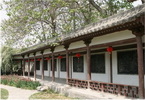 |
Qinglong temple
青龙寺 |
|
GPS: |
34.23255,
108.98913 |
|
Built in 582, it was called
Linggan Temple before being
renamed Qinglong Temple. Many
Japanese monks were sent to
Qinglong Temple to study
Buddhism during the Tang Dynasty
(618 – 907). Unfortunately, it
was destroyed in 1086, and
remained unknown to the world
for almost a millennium until
1963 when it was restored. |
 |
|
| |
|
|
|
|
|
|
 |
Chinese
Caligraphy road (Shuyuanmen)
书院门 |
|
GPS: |
34.25294,
108.94954 |
|
Xian's art district is called
Shuyuanmen and there are some
local artists here that sell
paper cut art. Paper cutting
began as a major art form in
Xi'an around the seventh
century, which was the city's
heyday. Every shop sells either
art or art supplies, such as
these calligraphy brushes. |
 |
|
|
|
|
|
 |
Huajue
Alley (Muslim Street)
化觉巷古玩街 |
|
GPS: |
34.26107, 108.94255 |
|
Huajue Xiang is a 500 meter
narrow alley located between the
Drum Tower and the Great Mosque
in the center of the city. It is
a great place to pick up
souvenirs and antiques. Most of
the residents in the Huajue
Xiang area are Muslims-the Hui
minority group. |
 |
|
|
|
|
|
|
|
 |
Xian City Walls
西安城墙 |
|
GPS: |
34.25206,
108.95029 |
|
The Xian City Wall in central
area of Xian city is not only
the most complete city wall that
has survived in China, but also
one of the largest and most
complete ancient military
systems of defense in the world.
That 600 years old city wall was
built in the Ming Dynasty
(1368-1644) on base of the
Imperial city wall of the Tang
Dynasty(618-907). |
 |
|
|
|
|
|
 |
Confucius
Temple (Stele Forest)
西安碑林 |
|
GPS: |
34.25287,
108.95278 |
|
The Stele Forest, also called
Beilin Museum, is a themed
museum focusing on displays of
stone steles, epigraphs and
stone sculptures from past
dynasties. Its construction is
based on Xi'an Confucius Temple
dating from 1087 during the
North Song Dynasty (960 – 1127). |
 |
|
|
|
|
|
 |
Eight Immortals Temple
(Ba Xian An)
八仙宫 |
|
GPS: |
34.26469, 108.97989 |
|
Temple of the Eight Immortals
(Ba Xian An in Chinese, aka
Eight Immortals Palace and
formerly Eight Immortals
Nunnery), is the biggest Taoist
temple in Xi'an and is a famous
Taoist architecture in northwest
China. The temple is said to be
built in the Song Dynasty
(960-1279), and was repaired and
expanded many times in
succeeding dynasties. |
 |
|
|
|
|
|
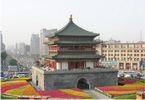 |
Bell Tower
西安钟楼 |
|
GPS: |
34.25946,
108.94701 |
|
The Bell Tower has a classical
structure with carved beams and
painted rafters. It is 36 meters
above ground. The base of the
Bell Tower is 1,337.4 square
meters in size, 8.6 meters high
and 35.5 meters wide. The tower
was built in 1384 by Emperor Zhu
Yuanzhang as a way to dominate
the surrounding countryside and
provide early warning of attack
by rival rulers. |
 |
|
|
|
|
|
 |
Drum
Tower 鼓楼 |
|
GPS: |
34.26023,
108.94355 |
|
It was initially built in 1380
during the reign of Emperor
Hongwu of the Ming Dynasty
(1368-1644), and was renovated
twice in 1699 and 1740 in the
Qing Dynasty (1644-1911). It is
a two-storied post and panel
structure, 34 meters (about 112
feet) high and 52.6 meters
(about 172 feet) long from east
to west as well as 38 meters
(about 124 feet) wide from north
to south. |
 |
|
|
|
|
|
 |
Xi'an
City (Others)
西安市 |
|
GPS: |
34.26483,
108.94688 |
|
Xi’an is a large city and
capital of Shaanxi Province in
central China. Once known as
Chang’an (Eternal Peace), it
marks the Silk Road’s eastern
end and was home to the Zhou,
Qin, Han and Tang dynasties'
ruling houses. |
|
|
|
|
|
|









